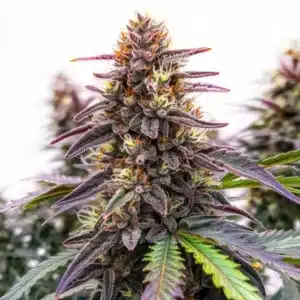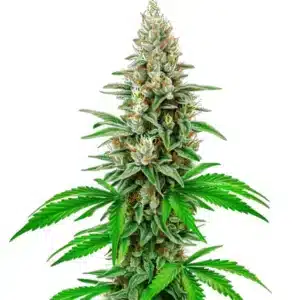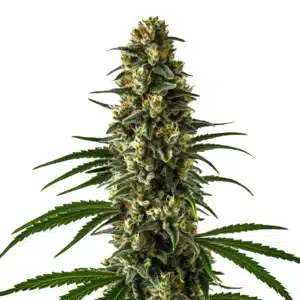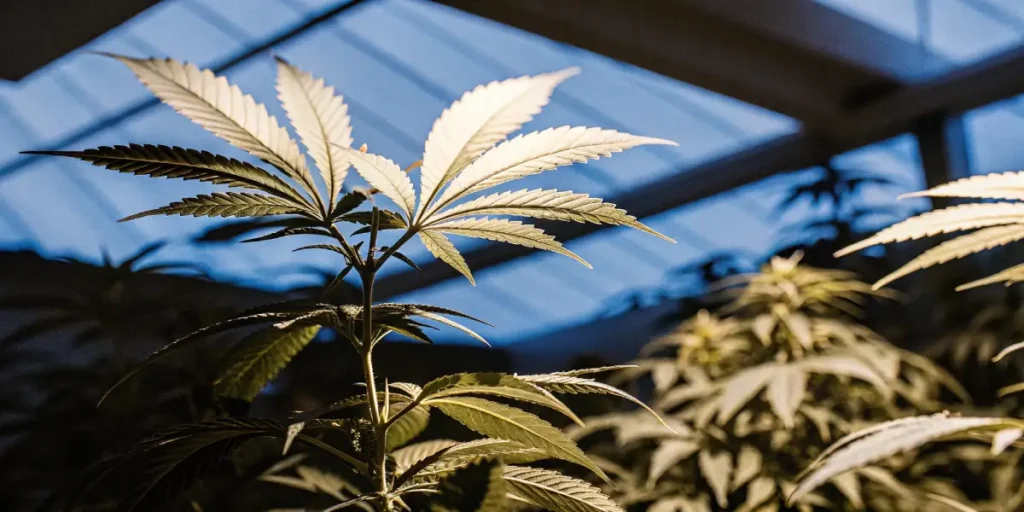
Cannabis Nutrient Lockout
Cannabis nutrient lockout can be a real headache for both new growers and seasoned cultivators. It happens when your plants cannot take in the nutrients from the soil, even though they are present. This can lead to a range of issues, affecting the overall health and yield of your plants. Recognizing and addressing this problem swiftly is crucial for your garden’s success.
Various factors can contribute to nutrient lockout. These include pH imbalances, salt buildup, and poor watering practices. Each of these factors can disrupt the plant’s ability to absorb essential nutrients, leading to visible symptoms like yellowing leaves or stunted growth. Knowing these causes helps you tackle the issue head-on.
Recommended Strains
Blackberry Pie
|
|
THC | 18% - 20% (Medium) |
|
|
Type | Feminized |
|
|
Yield | Medium |
|
|
Phenotype | 50% Indica / 50% Sativa |
Blue Colombian Kush
|
|
THC | 15% - 23% (Medium) |
|
|
Type | Feminized |
|
|
Yield | High |
|
|
Phenotype | 70% Indica / 30% Sativa |
It’s essential to regularly check the pH of your soil or growing medium. The ideal pH range for cannabis is typically between 6.0 and 7.0 in soil and 5.5 to 6.5 in hydroponic setups. When the pH drifts outside of these ranges, nutrient uptake becomes compromised, leading to nutrient lockout. Monitoring and adjusting pH levels is a proactive step every grower should take.
Causes of Cannabis Nutrient Lockout
Several factors can cause cannabis nutrient lockout. One common cause is the buildup of salts in the growing medium. Over time, these salts accumulate and prevent the roots from absorbing nutrients properly. This often happens when using synthetic fertilizers, which can leave behind residues if not flushed out periodically.
Another cause is incorrect pH levels. When the pH of your soil or water is off, it affects the plant’s ability to take in nutrients. This is especially true for essential elements like iron, calcium, and magnesium. Regular testing and adjusting of pH levels are critical to maintaining healthy cannabis plants.
Environmental stressors, such as extreme temperatures or high humidity, can also contribute to nutrient lockout. These conditions can alter the plant’s metabolism and affect its nutrient absorption capabilities. Ensuring a stable growing environment helps mitigate these risks.
Improper watering techniques, such as overwatering or underwatering, can exacerbate the problem. Both conditions can lead to root issues, which in turn affect how well a plant can take up nutrients. Consistent and proper watering practices can help maintain a balanced nutrient uptake.
Symptoms of Nutrient Lockout in Cannabis Plants
Identifying the symptoms of nutrient lockout in cannabis plants early can save you a lot of trouble. Common symptoms include yellowing leaves, especially the older ones. This yellowing occurs because the plant cannot access nitrogen, which is vital for its growth.
Another symptom to watch for is stunted growth. If your plants seem to have halted or slowed down in their development, nutrient lockout could be the culprit. The roots are unable to absorb the nutrients needed for cell division and growth, leading to smaller, less vigorous plants.
Discoloration of leaves, such as purple or red hues, can also be indicative of nutrient lockout. These color changes are signs that the plant is lacking essential nutrients, like phosphorus or potassium, critical for photosynthesis and energy transfer.
Weak or brittle stems are another symptom of nutrient lockout in cannabis plants. When your plant’s structure is compromised, it can be a direct result of nutrient deficiencies affecting its overall strength and stability. Regularly inspecting stem health can provide early warnings of potential lockout.
Promos & Deals
Diagnosing Nutrient Lockout in Marijuana
Diagnosing nutrient lockout in marijuana involves observing your plants and testing your growing medium. Start by examining the leaves for discoloration, curling, or other abnormalities. Compare these signs with typical nutrient deficiency charts to rule out other issues.
Next, test the pH of your soil or hydroponic solution. Use a reliable pH meter for accuracy. If the pH is outside the ideal range, adjustments are necessary. Lower or raise the pH gradually to prevent shocking the plants.
Electrical conductivity (EC) testing can also aid in diagnosing nutrient lockout. High EC levels may indicate excessive salt buildup, which restricts nutrient uptake. Regular EC tests help identify when a flush or nutrient adjustment is necessary.
Visual inspections combined with soil tests provide a comprehensive approach to diagnosing nutrient lockout. Consistent monitoring and documentation of plant health, alongside soil conditions, can help establish patterns and prevent future lockout occurrences.
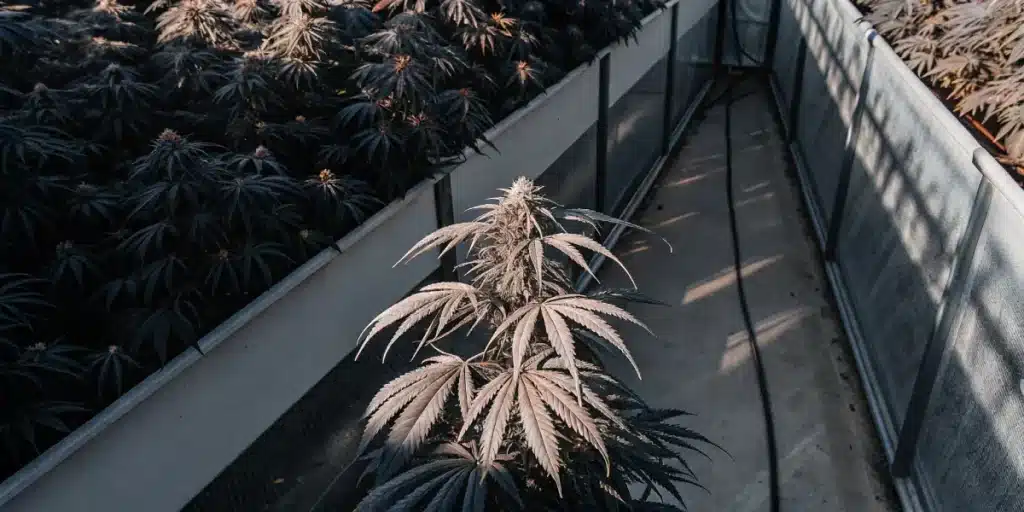
How to Fix Cannabis Nutrient Lockout
Knowing how to fix cannabis nutrient lockout can save your crop. Start by flushing your plants with clean, pH-balanced water. This process helps remove excess salts and reset the growing medium. Make sure the water drains well to avoid overwatering.
After flushing, allow the soil to dry before resuming your nutrient schedule. When you do feed again, use a half-strength nutrient solution to prevent overloading the plants. Gradually increase the concentration as your plants show signs of recovery.
Incorporating beneficial microbes into your growing medium can also aid recovery. These microbes assist in breaking down organic matter and can improve nutrient uptake efficiency, helping plants recover faster from nutrient lockout.
Consistent monitoring is key. Regularly check your pH and adjust your feeding practices based on your plant’s responses. Patience is essential, as recovery may take several days to a week, depending on the severity of the lockout.
Best Way to Prevent Cannabis Nutrient Lockout
Prevention is always better than cure. The best way to prevent cannabis nutrient lockout is to maintain a regular testing schedule. Check the pH and electrical conductivity (EC) of your growing medium frequently. This helps you catch potential issues before they affect your plants.
Choosing the right cannabis strain can also make a difference. Some strains are more resilient to nutrient issues. Consider strains like Blue Dream, Gorilla Glue #4, and Girl Scout Cookies from Blimburn Seeds. These strains are known for their robustness and can withstand slight nutrient fluctuations better than others.
Establishing a consistent feeding schedule tailored to your specific environment and strain requirements is crucial. Over-fertilization or inconsistent feeding can lead to nutrient imbalances and eventual lockout. Careful planning and execution can help avoid these pitfalls.
Regularly rotating your crops and amending your soil can also prevent nutrient lockout. Crop rotation reduces the buildup of specific salts and nutrients in the soil, while amendments can replenish any deficiencies, promoting a healthy and balanced growing medium.
Cannabis Nutrient Lockout Recovery Tips
Cannabis nutrient lockout recovery tips include maintaining a consistent watering schedule. Overwatering can exacerbate the problem by suffocating roots and promoting salt buildup. Water only when the top inch of soil is dry to the touch.
Incorporate a flushing routine every few weeks. This helps prevent the accumulation of salts and minerals in the soil. Use pH-balanced water to ensure that the flushing process does not disturb the pH balance.
Besides, foliar feeding can be a temporary solution during recovery. This method allows nutrients to be absorbed directly through the leaves, bypassing the root system and providing a quick nutrient boost to struggling plants.
Regularly assess the overall health of your plants during recovery. Keeping detailed notes on changes and improvements will guide your actions and help refine your approach to preventing future nutrient lockouts.
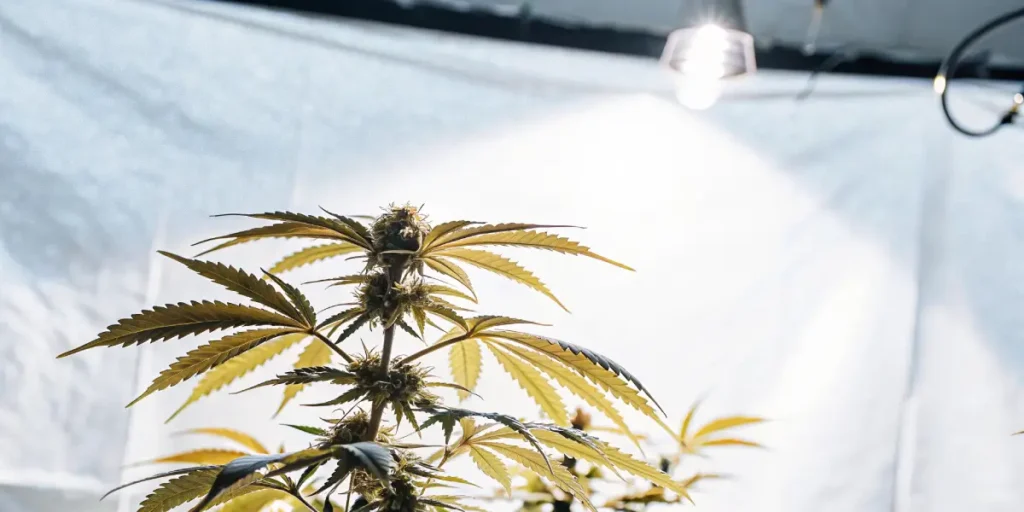
FAQs
What is the fastest way to fix cannabis nutrient lockout?
The fastest way to fix cannabis nutrient lockout is to flush your plants with pH-balanced water. This process helps remove excess salts and reset the soil. Ensure proper drainage to avoid waterlogging, which can lead to other issues like root rot.
After flushing, monitor your plants closely. Resume feeding with a diluted nutrient solution to avoid overloading the plants. Gradually increase the nutrient strength as your plants recover, keeping a close eye on their response to adjustments.
Ensure that your growing environment is optimized during recovery. Consistent temperature and humidity levels can reduce plant stress and support faster recovery from nutrient lockout.
Use specialized products like flushing agents to enhance the removal of residual salts. These products can expedite the flushing process, allowing for a quicker reset of your growing medium.
How do I identify nutrient lockout symptoms quickly?
Quick identification of nutrient lockout symptoms includes checking for yellowing leaves, stunted growth, and leaf curling. These signs are usually the first indicators of a problem. Regular inspections help catch these issues before they escalate.
Use a pH meter to test your soil or hydroponic solution. If the pH is outside the recommended range, it could be causing the lockout. Correcting the pH levels can help alleviate symptoms and restore nutrient uptake.
Develop a routine inspection schedule to monitor plant health regularly. Early detection of symptoms can lead to a faster response and potentially prevent more severe lockout cases.
Keep a detailed log of your growing conditions, including feeding schedules and environmental factors. This information can be invaluable in diagnosing nutrient lockout and implementing corrective measures promptly.
Can nutrient lockout affect all cannabis strains equally?
Nutrient lockout does not affect all cannabis strains equally. Some strains are more resilient and can tolerate nutrient imbalances better. Strains like Blue Dream and Gorilla Glue #4 are known for their robustness.
Choosing strains with a reputation for hardiness can be beneficial, especially if you’re new to growing. These strains can handle minor fluctuations in nutrient levels without significant impact on growth or yield.
Consult with experienced growers or seed banks to select strains that match your growing conditions and experience level. Tailoring your strain choice to your capabilities can reduce the risk of encountering nutrient lockout.
Evaluate your growing setup and adapt your strain selection accordingly. Indoor growers may prefer different strains than those cultivating outdoors, as environmental controls can vary significantly between these setups.
What role does pH play in nutrient lockout?
PH plays a crucial role in nutrient lockout. When pH levels are too high or too low, it hinders the plant’s ability to absorb nutrients, leading to deficiencies. Maintaining the correct pH range is essential for optimal nutrient uptake.
Regularly test and adjust the pH of your growing medium. This proactive approach helps prevent nutrient lockout and ensures your plants have access to the nutrients they need for healthy growth.
Knowing how different nutrients become available or locked out at various pH levels is vital. Each nutrient has a specific pH range in which it is most readily absorbed, highlighting the importance of precise pH management.
Investing in quality pH testing equipment and learning how to use it effectively can make a significant difference in preventing and managing cannabis nutrient lockout.
Are there specific products to help with nutrient lockout recovery?
There are several products available that can help with nutrient lockout recovery. Flushing agents are specifically designed to remove excess salts and residues from the soil. These agents can be particularly helpful during the flushing process.
Additionally, pH adjusters can correct imbalances in your growing medium. Using these products in conjunction with a consistent monitoring routine can aid in the recovery process and prevent future lockouts.
Supplemental nutrient solutions, designed for foliar feeding, can provide immediate relief to plants suffering from nutrient lockout, bypassing the impaired root system temporarily.
Enzyme products that break down dead root material can also be beneficial. These products improve root health and nutrient uptake, aiding in the overall recovery of plants affected by nutrient lockout.



